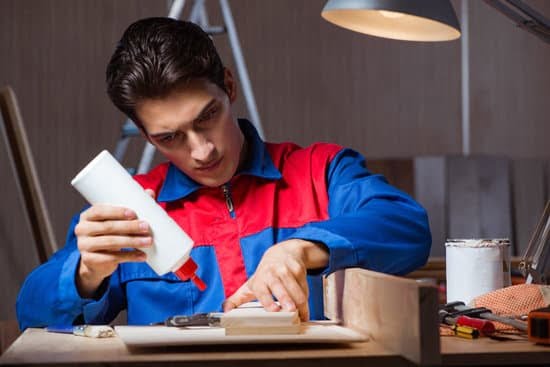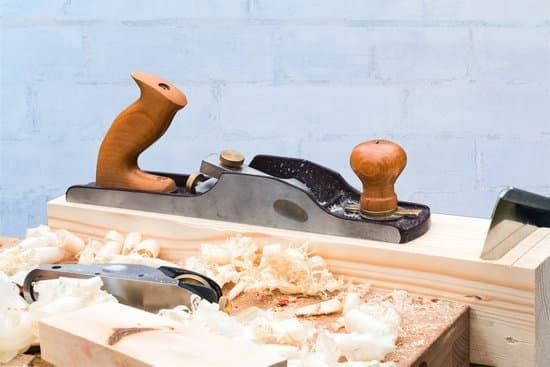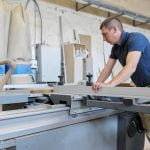When it comes to woodworking, precise measurements and cuts are essential for creating high-quality, professional results. One tool that can greatly assist in achieving accurate angles and measurements is the angle finder. Whether you are working on simple miter cuts or more complex compound angles, an angle finder can be a valuable asset in your woodworking toolkit.
An angle finder for woodworking is a versatile tool that allows woodworkers to measure and cut angles with precision. The importance of using an angle finder for woodworking cannot be overstated, as even the slightest deviation from the intended angle can result in misaligned cuts and joints, compromising the overall quality of the project. By understanding how to use an angle finder effectively, woodworkers can ensure that their projects are not only visually appealing but also structurally sound.
In this article, we will explore different types of angle finders available for woodworking, such as protractors, bevel gauges, and digital angle finders. Additionally, we will provide guidance on choosing the right angle finder for specific woodworking projects based on factors such as accuracy, ease of use, and versatility.
Furthermore, we will delve into practical applications of using an angle finder for miter cuts and compound angles in woodworking projects. Whether you are a beginner or an experienced woodworker, mastering the use of an angle finder can elevate the quality of your work and expand your capabilities in woodworking.
Different Types of Angle Finders
There are various types of angle finders that woodworking enthusiasts can use to achieve accurate cuts and measurements in their projects. Protractors, bevel gauges, and digital angle finders are the most common tools used for this purpose.
Protractors are a classic tool for measuring angles in woodworking. They feature a semi-circular scale marked with degrees and are particularly useful for determining the angle of an existing piece or layout work. Bevel gauges, on the other hand, provide an adjustable blade that can be set to any desired angle and then locked in place for easy transfer to a saw or other cutting tool.
Digital angle finders, also known as electronic protractors, have gained popularity due to their precision and ease of use. These devices feature a digital display that provides accurate readings of angles in degrees. They often come with additional features such as magnetic bases for hands-free use and memory functions to store measurements.
When selecting the right angle finder for a woodworking project, it’s important to consider factors such as accuracy, ease of use, and versatility. For simple tasks like measuring angles on existing pieces or basic layout work, traditional protractors may suffice. However, more complex projects with compound angles or tight tolerances may benefit from the precision and convenience of digital angle finders. Ultimately, choosing the right type of angle finder depends on the specific needs of the project at hand.
| Angle Finder Type | Features |
|---|---|
| Protractor | Semi-circular scale marked with degrees |
| Bevel Gauge | Adjustable blade for setting desired angles |
| Digital Angle Finder | Digital display for precise readings; additional features like magnetic bases & memory functions. |
How to Choose the Right Angle Finder for Your Project
When choosing the right angle finder for a woodworking project, there are several factors to consider in order to achieve accurate and precise measurements. From accuracy and ease of use to versatility, selecting the best angle finder plays a crucial role in the success of your woodworking endeavors.
Accuracy
One of the most important considerations when choosing an angle finder for woodworking is accuracy. Look for a tool that provides precise measurements with minimal margin of error. Whether you opt for a traditional protractor, bevel gauge, or digital angle finder, ensuring that it delivers accurate readings is essential for achieving perfect angles in your woodworking projects.
Ease of Use
Another factor to take into account is the ease of use of the angle finder. Consider how intuitive the tool is to operate and whether it allows for quick and efficient measurements. For woodworking projects where time is of the essence, having an angle finder that is user-friendly can make a significant difference in productivity.
Versatility
The versatility of an angle finder should also be considered based on the specific requirements of your woodworking project. Depending on the type of angles you need to measure and cut, certain tools may offer more flexibility than others. For instance, if your project involves both miter cuts and compound angles, look for an angle finder that can accommodate various types of measurements with ease.
By taking into account these considerations – accuracy, ease of use, and versatility – you can select the right angle finder that suits your specific woodworking needs. Whether you are working on simple angles or complex compound cuts, having the appropriate tool at your disposal will contribute to achieving professional results in your woodworking projects.
Using an Angle Finder for Miter Cuts
When using an angle finder for miter cuts, it’s crucial to position the tool correctly on the workpiece. This involves placing the angle finder against one side of the joint and adjusting it until it matches the desired angle. Once the angle has been determined, woodworkers can transfer this measurement to their miter saw or table saw to make accurate cuts.
It’s important to note that different types of miter saws may require adjustments or calculations based on their specific features and cutting capabilities. For example, compound miter saws allow woodworkers to adjust both the bevel and miter angles simultaneously, making them suitable for complex compound angles often found in crown molding and other decorative trims.
Moreover, having a reliable digital angle finder for woodworking projects can significantly enhance accuracy when making intricate miter cuts. Digital angle finders provide precise measurements in degrees, allowing woodworkers to set their saws with unprecedented accuracy for seamless joints and perfect fits.
| Angle Finder Type | Features |
|---|---|
| Protractor | Manual measurement with a rotating arm |
| Bevel Gauge | Precise bevel angle measurements |
| Digital Angle Finder | Provides accurate digital readouts in degrees |
Measuring and Cutting Compound Angles With an Angle Finder
When it comes to advanced woodworking projects, the ability to measure and cut compound angles is crucial for achieving precise and professional results. An angle finder for woodworking is an essential tool for this task, as it allows woodworkers to accurately measure and replicate complex angles with ease. Whether working on intricate furniture pieces or sophisticated architectural details, the use of an angle finder can significantly enhance the quality and precision of the final product.
There are several types of angle finders that can be used to measure and cut compound angles in woodworking. These include digital angle finders, bevel gauges, and protractors.
Each type has its own set of features and benefits, so it is important to choose the one that best suits the specific needs of the project at hand. Digital angle finders, for example, offer precise digital readouts for quick and accurate measurements, while traditional bevel gauges provide a more tactile and hands-on approach to angle measurement.
To effectively use an angle finder for measuring and cutting compound angles in woodworking, consider the following steps:
- Identify the specific angles required for the project
- Select the appropriate type of angle finder based on the complexity of the angles
- Position the angle finder against the surfaces where measurements need to be taken
- Make adjustments as necessary until desired angles are achieved
- Transfer measurements to the workpiece for precise cuts
By following these steps and utilizing an angle finder for woodworking, woodworkers can ensure that even the most intricate compound angles are accurately measured and cut, resulting in outstanding craftsmanship and attention to detail in their projects.
Tips and Tricks for Getting the Most Accurate Measurements With an Angle Finder
When working on woodworking projects, achieving precise measurements and cuts is essential for professional results. An angle finder for woodworking is a valuable tool that can help woodworkers ensure accuracy in their work. To make the most of an angle finder for woodworking, here are some expert tips to consider:
Expert Tips for Ensuring Precise Measurements and Cuts When Using an Angle Finder in Woodworking:
1. Calibrate Your Angle Finder Regularly: Just like any precision instrument, angle finders need regular calibration to ensure accurate readings. Make it a habit to check and calibrate your angle finder before starting any woodworking project to guarantee precise measurements.
2. Secure Workpieces Properly: When using an angle finder for woodworking, it’s crucial to secure your workpiece firmly in place before making any measurements or cuts. This helps prevent movement or shifting that can lead to inaccurate angles.
3. Use Lighting to Your Advantage: Adequate lighting is crucial when using an angle finder for woodworking. Shadows and dim lighting can affect the visibility of markings and lead to errors in measurement. Ensure you have good lighting around your work area when using an angle finder.
By following these expert tips, woodworkers can maximize the accuracy of their measurements and cuts when using an angle finder for woodworking projects, ultimately leading to high-quality results.
With these tips in mind, woodworkers can confidently use their angle finders to achieve precise angles in their woodworking projects.
Angle Finder Maintenance and Calibration
Angle finders are essential tools in the woodworking industry for achieving accurate measurements and precise cuts. However, to ensure their continued accuracy and reliability, it is important to properly maintain and calibrate them. This section will provide a guide on how woodworkers can maintain and calibrate their angle finders for optimal performance.
Regular Cleaning and Inspection
One of the key aspects of maintaining angle finders is regular cleaning and inspection. Woodworking environments can be dusty, which can affect the accuracy of angle finders over time. It is important to clean the tool regularly using a soft cloth to remove any debris or buildup. Additionally, inspecting the tool for any signs of damage or wear is crucial in ensuring its continued accuracy.
Calibration Process
Calibrating an angle finder is essential for maintaining its accuracy. Most angle finders come with a calibration feature that allows users to adjust the tool if necessary. Calibration typically involves zeroing out the measurement scale and ensuring that it reads accurately when set against a known reference angle. Following the manufacturer’s instructions for calibration is important to ensure that the process is done correctly.
Storage and Handling
Proper storage and handling also play a significant role in maintaining the accuracy of angle finders. When not in use, it is important to store the tool in a protective case or pouch to prevent damage from impacts or exposure to elements such as moisture or extreme temperatures. Additionally, proper handling during use, such as avoiding dropping or mishandling the tool, can help prolong its accuracy.
By following these maintenance and calibration practices, woodworkers can ensure that their angle finders continue to provide accurate measurements for their woodworking projects. Keeping these tools well-maintained not only enhances their lifespan but also contributes to achieving professional results in woodworking endeavors.
Real-World Examples
In the world of woodworking, achieving precise angles is essential for creating professional-looking projects. Angle finders provide woodworkers with the tools they need to accurately measure and cut angles, whether for simple miter cuts or complex compound angles. By using the right angle finder for the job and following best practices for accuracy, woodworkers can elevate their craft and produce stunning results.
One real-world example where angle finders have been crucial is in the construction of intricate picture frames. Using a digital angle finder, woodworkers can easily measure and adjust miter cuts to create seamless corners for an impeccable finished product. Additionally, when building furniture such as tables or chairs, angle finders are indispensable for ensuring that all pieces fit together perfectly, resulting in sturdy and visually appealing final products.
For those new to woodworking or looking to expand their skills, seeing real-world examples of how angle finders are used in practical projects can offer valuable inspiration. Understanding how professionals utilize these tools can help aspiring woodworkers gain confidence in using angle finders effectively. With the right guidance and practice, woodworking enthusiasts can achieve professional-level results by incorporating angle finders into their projects.
Ultimately, whether it’s crafting simple DIY home improvements or tackling more advanced furniture-making endeavors, angle finders are indispensable tools that empower woodworkers with the ability to achieve precision and accuracy in their work. By harnessing the power of these devices and mastering their use through practice and education, woodworkers at any skill level can take their projects to new heights and create beautiful, high-quality pieces that showcase their craftsmanship and attention to detail.
Frequently Asked Questions
What Is the Most Accurate Angle Finder?
The most accurate angle finder is likely a digital protractor, which uses electronic sensors to measure angles with precision. It eliminates the need for manual reading and reduces the possibility of human error.
How Do You Measure Angles in Woodworking?
In woodworking, angles can be measured using a combination square, which has a ruler and a 90-degree adjustable arm. By aligning the arm with the edge of the wood, you can easily measure and mark different angles.
What Is the Best Tool for Cutting Angles in Wood?
The best tool for cutting angles in wood is a miter saw. This specialized saw allows woodworkers to make precise angled cuts by pivoting the blade to the desired angle and then bringing it down through the wood. Its versatility makes it ideal for cutting various angle degrees accurately.

Hi everyone! I’m a woodworker and blogger, and this is my woodworking blog. In my blog, I share tips and tricks for woodworkers of all skill levels, as well as project ideas that you can try yourself.





